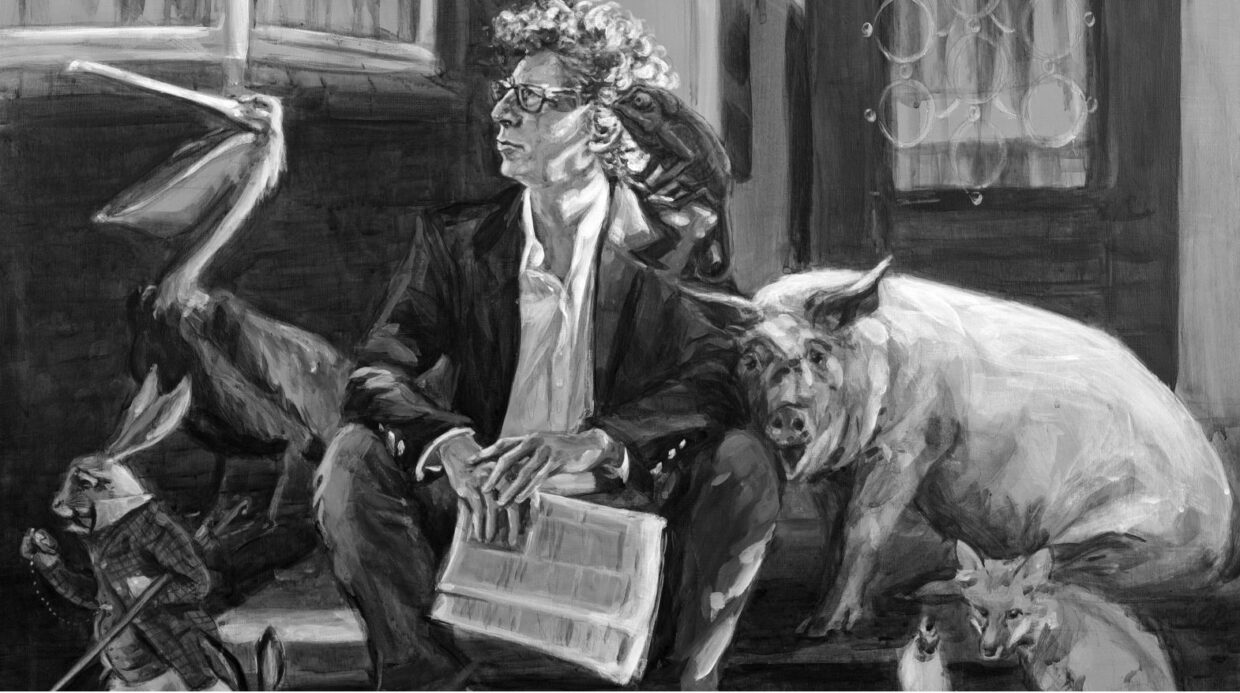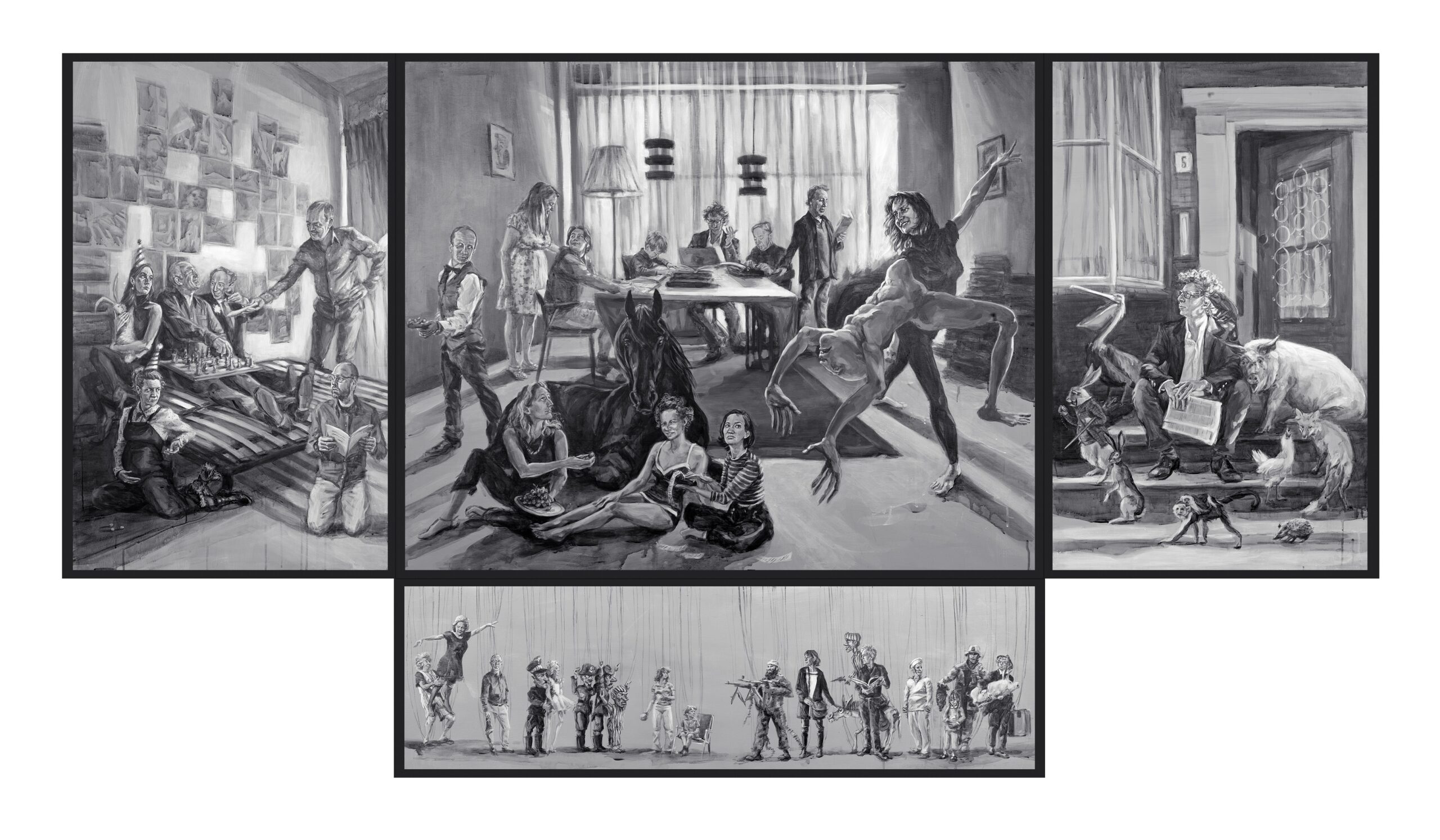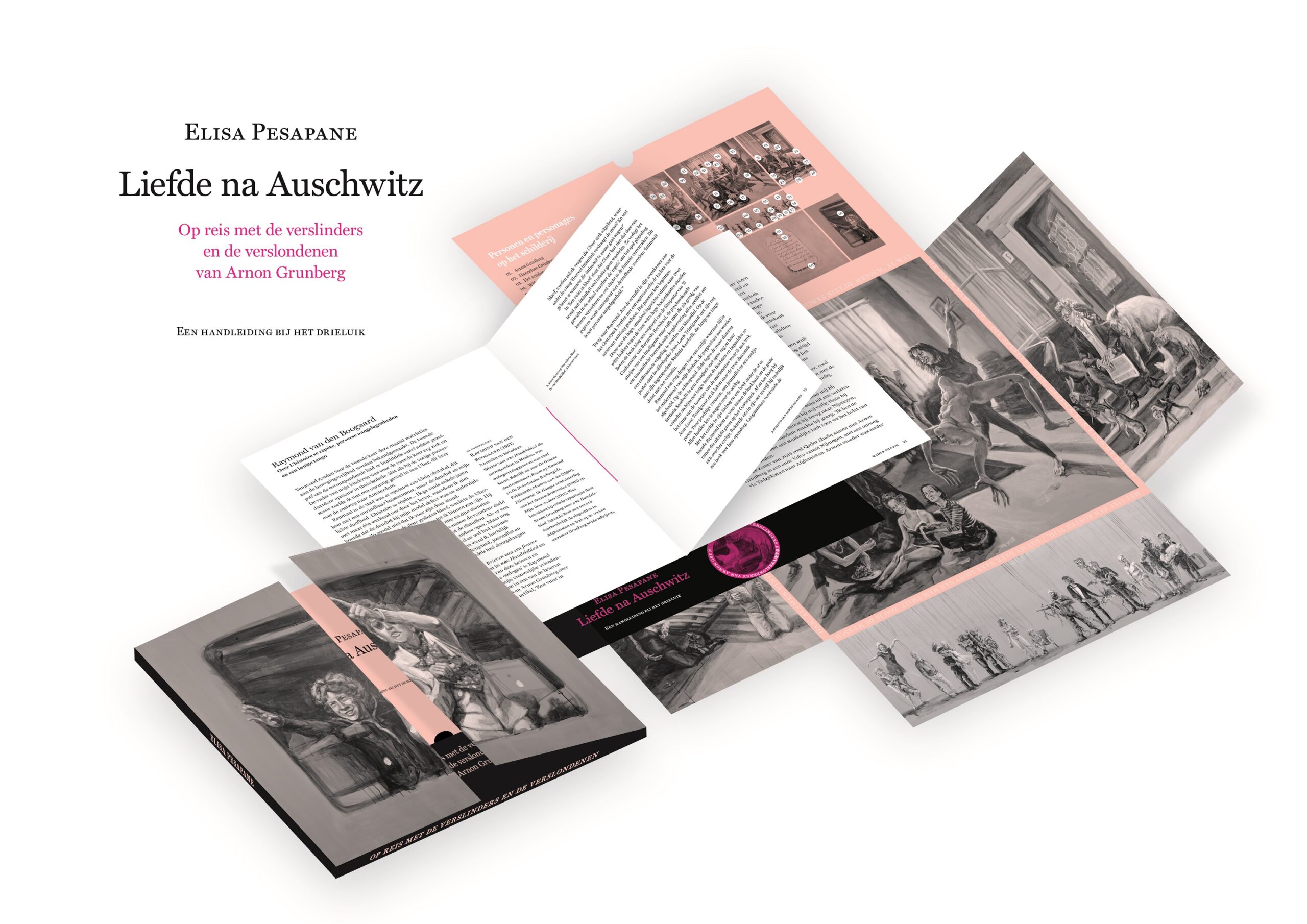Love after Auschwitz (Liefde na Auschwitz):
Elisa Pesapane & Arnon Grunberg.
Book and Exhibition
Museum of Literature (Literatuurmuseum), The Hague (7/10/21-10/4/22) Book: www.uitgeverijzoetzuur.nl
An invitation from the Museum of Literature in 2018 to paint a portrait of author Arnon Grunberg led to the birth of a much more substantial project: A ‘gesamtkunstwerk’ of both a writer and painter for whom the first 50 years of Arnon Grunberg’s life and work served as material.
Elisa Pesapane has not only painted a monumental triptych on wooden panel, but also written a book, the ‘user manual’ for the painting, that complement each other:
Liefde na Auschwitz. Op reis met de verslinders en verslondenen van Arnon Grunberg
(Love after Auschwitz. A journey with the devoured and the devourers of Arnon Grunberg)
Arnon Grunberg: One could say that the title ‘Love after Auschwitz’ for a portrait of a writer and some of the people around him may sound somewhat heavy. But isn’t this the characteristic or maybe even the task of the writer to diminish the weight of our heavy burdens so that they can become bearable? In my opinion the visual artist can strive for the same.
In this triptych and book, the spectator and reader are taken on a journey through the first 50 years of the life and work of Arnon Grunberg. The dialogue between Pesapane and Grunberg, her study of his work and her meetings with the models form the building blocks for the project.
Grunberg provided the title and his life and work became Pesapane’s material. Together they compiled a list of people who had played a role in his literary work to date and who were to become, including Arnon himself, subjects within the piece.
Commenting on ‘Love after Auschwitz’, Wim Weijland, director of the Dutch National Museum of Antiquities in Leiden, said:
“With ‘Love after Auschwitz’, Elisa Pesapane has created a totally new genre. It is not the portrait of a an author but rather a visual biography of the life and work of a great author. Together they give shape to a totally new story in which the spectator is taken on a journey between reality and fantasy.”
A Doll’s House as Inspiration for the Triptych
The form of the triptych is mainly inspired by an 18th century doll’s house belonging to Sara Rothé, a wealthy Dutch merchant’s wife, which is part of the Frans Hals Museum collection in Haarlem.
These doll’s houses were a 16th and 17th century tradition of collecting art and rare objects and displaying them in special ‘art cabinets’. Children were not allowed to play with them. They were a miniature version of the real world, whose purpose was to provoke a contemplation on reality.
Marrigje Rikken, Head of Collections of the Frans Hals Museum, in Haarlem said of the piece: “How wonderful to see that the visits of Elisa Pesapane as a little girl to the doll’s house of Sara Rothé within our museum led to the inspiration for new work in her adult life. Just as
Sara used parts of 17th century doll’s houses to build a new one, and the text on its pennon sheds a light on life, in a methaphorical sense Elisa Pesapane has found a new form to capture the life and work of a fellow artist in images.In doing so, she has made an innovative record of what is a beautiful tradition of transmission and reflection.”
The panels of the triptych ‘Love after Auschwitz’ show various rooms of the ‘departure station’: Grunberg’s parental house, where the travellers, passengers ad regulars meet. In the basement we find a puppet theatre of war, and in and around the house chugs a little Wehrmacht-grey military train (Kriegslokomotive), towing a string of cattle cars that connects the past, present and future.
The Book and ‘User Manual’ for the Triptych Grunberg inspired Pesapane to put down in words her travels and tell the stories of the meetings with all the models included in the piece. These tales show how thin the line between reality and fantasy can become when a storyteller pays you a visit.
The book ‘Liefde na Auschwitz. Op reis met de verslinders en verslondenen van Arnon Grunberg’
(Love after Auschwitz. A journey with the devoured and the devourers of Arnon Grunberg’)is a miniature version of the triptych (including a legend containing the names of all the characters). Within this miniature triptych lies a book, the user manual for the painting, with an epilogue written by Arnon Grunberg.
Order your copy of the book directly at Uitgeverij Zoetzuur
or at your local bookstore:(ISBN 9789082850840)
€ 27,50
Design book: by Yolanda Huntelaar / Werkplaats Amsterdam.




